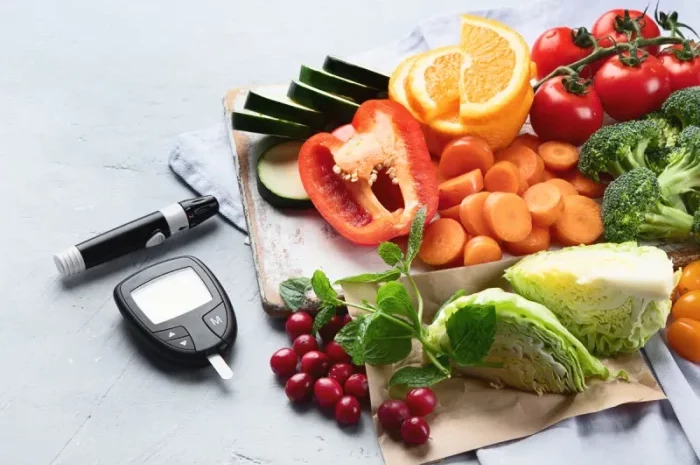Overview of Blood Sugar Impact
Maintaining stable blood sugar levels is crucial for overall health, especially for individuals with conditions like diabetes or prediabetes. Diet plays a pivotal role in managing blood sugar, and the selection of fruits can significantly influence glycemic control. Understanding the concepts of glycemic index (GI) and glycemic load (GL) is essential when choosing fruits for a blood sugar-friendly diet.
The glycemic index ranks carbohydrate-containing foods based on their effect on blood sugar levels. Foods with a high GI value cause a rapid spike in blood sugar, while those with a low GI value lead to slower and more gradual increases. Glycemic load, on the other hand, considers both the quality and quantity of carbohydrates in a serving of food, providing a more accurate measure of its impact on blood sugar levels.
When it comes to fruits, not all are created equal in terms of their glycemic impact. Some fruits, despite their natural sweetness, have a lower GI and GL, making them more suitable choices for individuals concerned about blood sugar levels.
List of Recommended Fruits
Among the fruits known for their lower impact on blood sugar levels are berries, cherries, plums, grapefruit, peaches, and apples. These fruits are prized for their fiber content, which helps slow down the absorption of sugar into the bloodstream, thereby preventing sharp spikes in blood glucose.
Berries, such as strawberries, blueberries, raspberries, and blackberries, are particularly renowned for their low GI and high fiber content. Cherries and plums also boast favorable glycemic profiles, along with a plethora of vitamins, minerals, and antioxidants that contribute to overall health. Grapefruit, with its tangy flavor and abundance of vitamin C, is another excellent choice for blood sugar management. Peaches and apples, when consumed with their skins, provide a satisfying crunch along with valuable nutrients and fiber.
Nutritional Profiles
The recommended fruits offer more than just blood sugar stability; they are nutrient powerhouses with numerous health benefits. Berries, for instance, are rich in antioxidants like anthocyanins and flavonoids, which help combat inflammation and oxidative stress. They are also packed with vitamin C, manganese, and various phytochemicals that support immune function and cardiovascular health.
Cherries are prized for their anti-inflammatory properties, thanks to compounds like anthocyanins and quercetin. They have been linked to reduced risk of gout attacks and may help alleviate symptoms of arthritis. Plums, in addition to being low GI, are a good source of vitamin K, potassium, and dietary fiber, promoting digestive health and bone strength.
Grapefruit stands out for its high vitamin C content and unique phytochemicals like limonoids, which have been studied for their potential anticancer effects. Peaches are rich in vitamins A and C, potassium, and beta-carotene, supporting skin health and vision. Apples, with their soluble fiber called pectin, are not only beneficial for blood sugar control but also for gut health and cholesterol management.
Portion Sizes and Preparation
While these fruits offer numerous health benefits, moderation is key, especially for individuals watching their blood sugar levels. Portion control is crucial to prevent overconsumption of carbohydrates, which can lead to spikes in blood glucose.
Fresh or frozen fruits are preferable over processed options like canned fruits in syrup, which often contain added sugars. When consuming dried fruits, it’s important to be mindful of portion sizes as they are more concentrated in sugars and calories. Opting for unsweetened varieties and pairing them with protein or healthy fats can help mitigate their glycemic impact.
In terms of preparation, enjoying fruits in their whole, natural form is ideal to maximize their nutritional benefits. However, incorporating them into recipes like smoothies, salads, or yogurt parfaits can add variety to the diet while still prioritizing blood sugar control.
Incorporation into Diet
Incorporating blood sugar-friendly fruits into a balanced diet involves mindful planning and attention to overall carbohydrate intake. Pairing fruits with protein-rich foods like Greek yogurt, cottage cheese, or nuts can help stabilize blood sugar levels and prolong satiety.
For breakfast, adding berries to oatmeal or topping whole-grain toast with sliced peaches can provide a nutritious and satisfying start to the day. Snacking on apple slices with almond butter or enjoying a bowl of mixed berries with a dollop of Greek yogurt can curb cravings without causing significant blood sugar fluctuations.
At lunch and dinner, incorporating fruits into salads or savory dishes can impart natural sweetness and vibrant flavor. Grilled chicken salad with strawberries and avocado or a stir-fry with vegetables and pineapple chunks are delicious ways to incorporate blood sugar-friendly fruits into main meals.
Personalization
It’s important to recognize that individual responses to fruits can vary based on factors such as metabolism, insulin sensitivity, and overall dietary patterns. While some individuals may tolerate certain fruits well, others may experience spikes in blood sugar even with low-GI options. Monitoring blood sugar levels after consuming different fruits can help individuals identify their personal responses and make informed choices accordingly.
Consultation with Healthcare Providers
For individuals with diabetes or prediabetes, seeking guidance from healthcare providers, such as registered dietitians or endocrinologists, is paramount. These professionals can offer personalized dietary advice tailored to individual needs and health goals. They can also help individuals navigate complex dietary considerations, such as carbohydrate counting and meal planning, to achieve optimal blood sugar control.
Conclusion
In conclusion, selecting the right fruits can play a pivotal role in managing blood sugar levels and promoting overall health. By prioritizing fruits with a lower glycemic impact, such as berries, cherries, plums, grapefruit, peaches, and apples, individuals can enjoy the natural sweetness of fruits while supporting blood sugar stability. With mindful portion control, varied preparation methods, and consultation with healthcare providers, individuals can incorporate these fruits into a balanced diet that meets their nutritional needs and health objectives.























